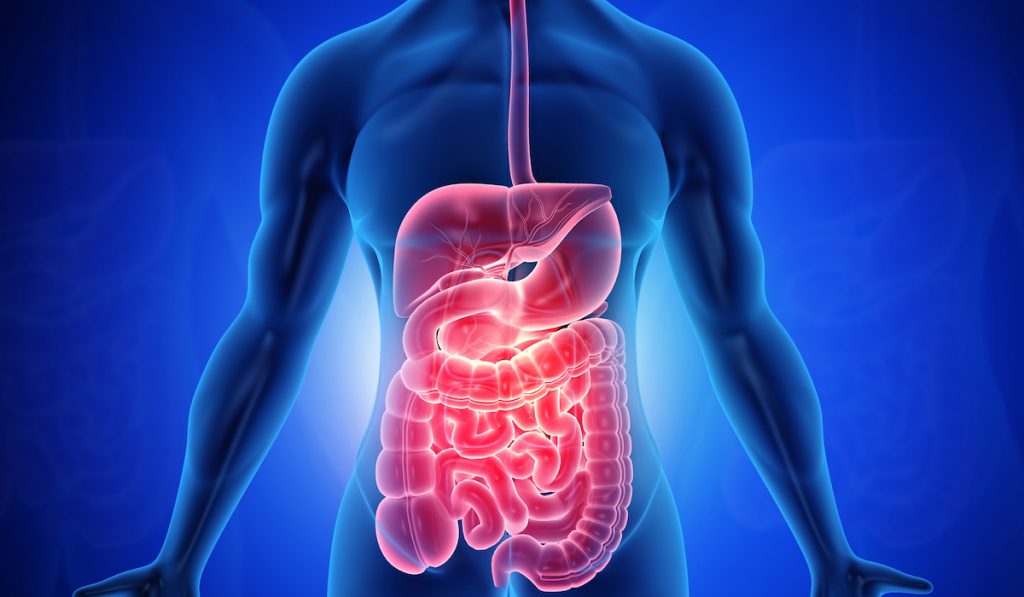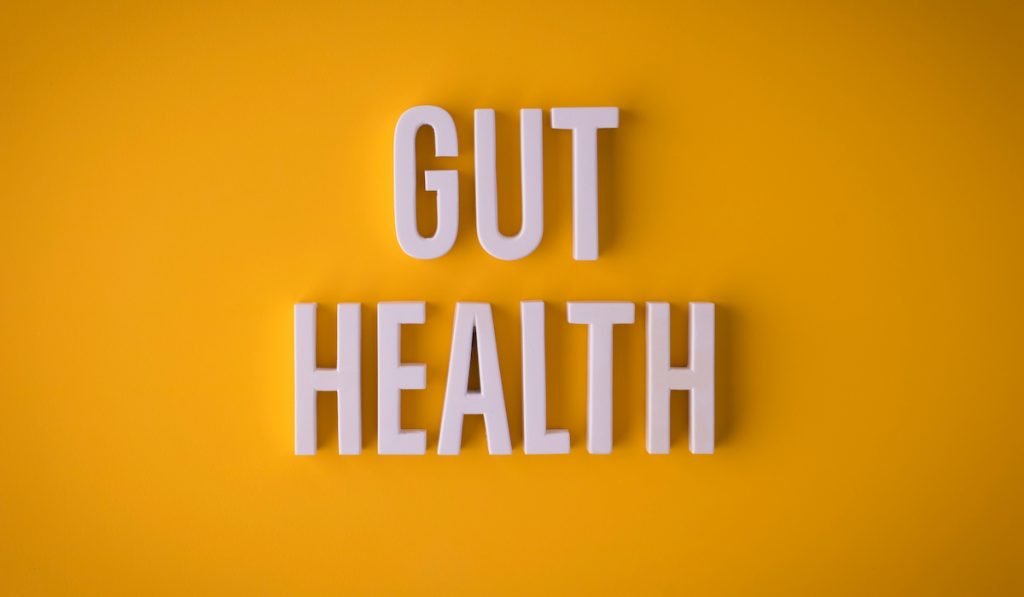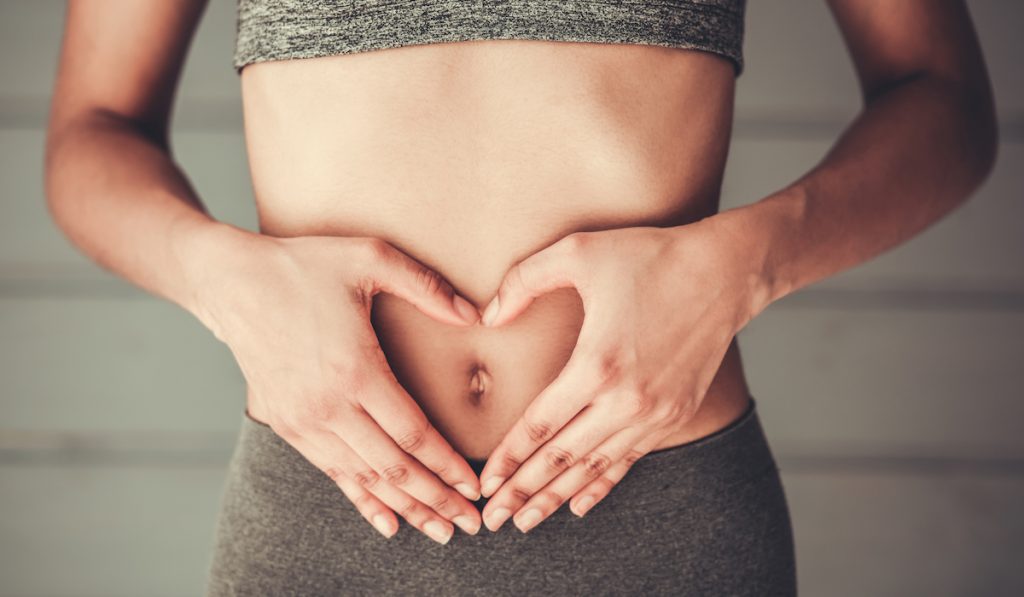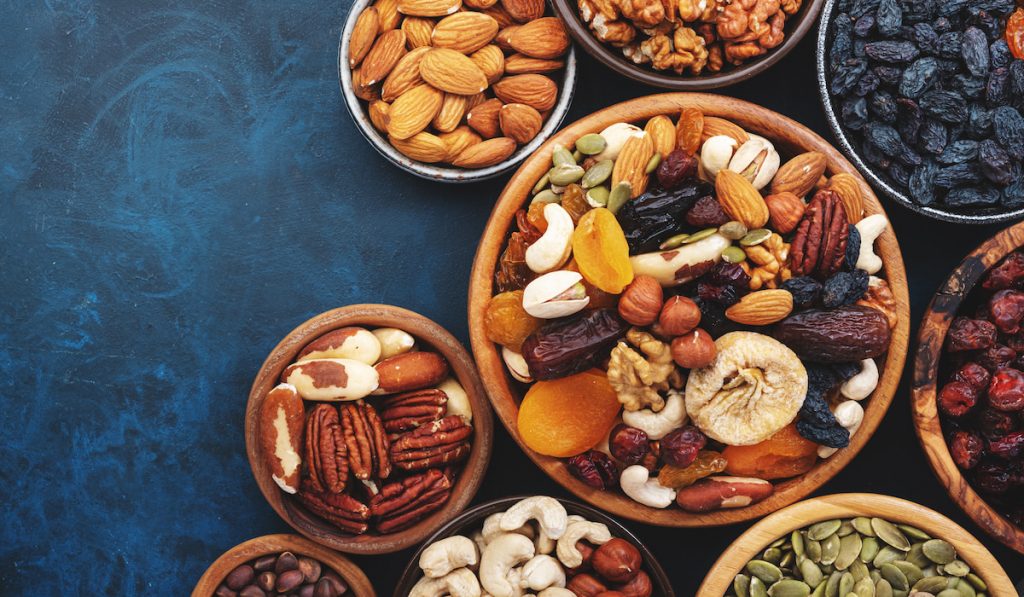In our first-world, commercialized society, it is understandable that we all experience gut imbalance and gastrointestinal issues from time to time. Now that our society doesn’t require constant labor and movement, we can find ourselves spending most of our time sitting down, at a desk, or on the couch.
With our grand economy, we have somehow managed to destroy ourselves by choosing to spend our time and effort developing highly processed foods, simply because they taste better, that can have horrible effects on the gut.
We all have a microbiome of healthy bacteria in our bodies, and we have newly discovered the benefits of it in our gut and stomach region. You know how greek yogurt has “live, active cultures” in it? Well, we have the same in our stomachs.

Live, active, healthy bacteria (yes, bacteria can be healthy if it is natural and helpful to our bodily functions!) reside in our gut to help us with food digestion and keep us healthy and energized. However, messing up this delicate system can lead to some uncomfortable, unpleasant, or even painful consequences.
Gastrointestinal issues can include diarrhea, constipation, gallbladder and liver dysfunction, stomach ulcers, chronic fatigue, Crohn’s Disease, IBS, and even low energy, joint pain, food sensitivity, bloating, acne, and depression.
If you’re finding your discharge in the bathroom to be abnormal, if you’re feeling pain in your stomach, if you’re feeling tired all the time or reacting badly to the food you eat, or even if you’re experiencing frequent breakouts or excessive bloating which makes you self-conscious of your appearance, most likely the issue is a wounded gut.
Read on to learn how to heal your gut naturally, without going on any medication! These are natural body functions and can be healed naturally.

Table of Contents
The Usual Suspects Concerning Gut Health: Whodunnit?
Perhaps you’re experiencing gastrointestinal symptoms as listed above, but you’re not sure what’s causing them. Why am I feeling this way? Why is this happening to my body?
Typically, rather than your inherited traits and genetics, it is your lifestyle and environment that cause such issues. Well, there are five usual suspects concerning your gut health that will help address your issue, getting you one step closer to healing your gut.
The first is toxins. Toxins are unnatural, harmful chemicals that make their way into your body through your food. Such toxins can include pesticides farmers put on their crops and therefore into your body, from GMOs, and from processed foods and artificial dyes and sweeteners that have become commonplace in most foods found today.
So, when trying to find the culprit, consider taking a look at your cupboards, fridge, and pantry.
Check the nutrition facts and ingredients of your foods, specifically the added sugars (sugar, high fructose corn syrup, Dextrose, Maltodextrin, Sucrose– sometimes there will be multiple listings in the ingredients of just one product!), dyes added and all the large chemical-sounding names we don’t know.
The shorter the ingredient list, the more ingredients you recognize, and the lower sugars are on the ingredient list (or completely absent!), the healthier the food.
Next, are prescription drugs. Intestinal bleeding is a warning in the description of most pain killers if taken too regularly, and antibiotics are especially harmful.
Antibiotics kill the healthy bacteria in your gut along with the harmful ones they are designed to dispose of. So only take antibiotics when necessary and directed by your doctor.
Stress is also one of the major culprits. Stress has been identified to do many harmful things to the body, and this is because of its inflammatory properties. It can cause acne and other issues, but where the gut is concerned, stress can damage your gut lining by imbalancing your gut bacteria and weakening your healthy gut microbes.
Finally, the most extreme cases. These are ones that, if you suspect them to be the culprits, you should go into the doctor to get checked out. First are pathogens, which are living critters such as bad bacteria, yeast overgrowth, and parasites residing in your body and feeding off your healthy bacteria.
If worst comes to worst, it could be organ malfunction – misfunctioning organs that are essential in breaking down fats and toxins, such as the gallbladder and the liver, can be a major cause of your gastro-intestinal issues and should be addressed by your physician immediately.

A Little Introduction Before the Big Reveal
There are four generalized steps in the gut healing process: Flushing, Exchanging, Restoring, and Rebalancing.
I’ll explain the part of the healing process each of those are in the next section, but they are only broad explanations of what should be taking place during that phase of the process.
The steps, however, do not go into detail about what you can do to heal your gut in each phase, only what happens when your gut heals. Once you know the initial steps, we can go into more detail about specific things you can try within each process to heal your gut.
The Four Steps
Flushing is the first step in the gut healing process. Flushing entails flushing all gut-disrupting factors out of your body. Clear out all toxins, drugs, and pathogens from your body.
It is essential to flush these out of your system for your body to be able to even start its healing process. You must give your body a fresh start, building your gut health from the ground up.
Next, exchange. Swap out your current, harmful lifestyle for one that is good for your gut health. Swap out toxic and unhealthy foods, antibiotics, lethargic habits for nutritious, healthy foods, no medications, and active lifestyles. This will encourage gut health to begin. Continuing to pursue your toxic habits will plateau your healing process or make it worse.
Restoring is the phase that will bring your gut health back to its fullest, the way it should be and the way it was in the beginning before what hurt your gut was introduced to your body.
Harming your gut creates holes in your gut lining, letting molecules of foods and toxins into the bloodstream and creating the issues and symptoms mentioned before.
Consistently sticking to the healthier lifestyle you exchanged for a previously harmful lifestyle will allow for your gut lining to heal, which will help resolve the symptoms that caused you to investigate your gut in the first place.
Finally, rebalance your gut! There are multiple different types of bacteria needed for your gut to function at its best.
Many times our food, antibiotics, lifestyle choices, or organ failure tips the balance of the microbiome, producing more of one bacteria or not enough of another.
In the healing process, you cleaned your bacterial slate by flushing your body of all toxic contents, introduced options that encourage gut health, let the healthy additions and lack of harmful ones heal the holes in your gut, alleviating your symptoms.
Now, in the final rebalancing step, you make sure your microbiome is in harmony, replenished, and rebalanced with all the right bacteria in the right quantities. This will restore your gut to its highest working order, and prevent any gut issues in the future!
Flushing Out the Gut
How do you flush out all of the toxins you’ve been letting into your body to start your gut-healing journey with a clean slate?

First, cold turkey cut out all toxins. Stop eating processed foods, foods with refined sugars, dyes, and GMOs. Over time, without reintroducing these foods to your body, they will eventually flush out and no longer be negatively influencing you. Drinking lots of water, at least eight cups a day is a good way to get rid of these toxins faster.
Physically flushing it all out of your system (by drinking tons of water and relieving yourself a lot!) effectively removes the harmful substances much faster.
Clean out your cupboards, pantry, and fridge, throwing away all processed foods (remember the ingredients thing we talked about above!).
If your medical condition allows, stop using those painkillers and antibiotics and throw them away! Out of house, out of sight, out of mind.
Exchanging a Good Lifestyle for a Better One
Now is the time to fill those empty cupboards and shelves with the good stuff! We’re going to replace all of those heavily processed and sugary foods with natural, organic foods with real nutrients.
Choose raw fruits and vegetables from food sources you trust. The healthiest options are typically found at farmer’s markets, fresh from local food-growing sources.
In-season foods are also typically the most healthy, as they are naturally grown at that time of year and will not be unnaturally grown or have preservatives added.
Switch out your processed foods for nutrient-rich whole foods. For example, switch out processed white rice for brown or wild rice. Switch out your white bread for whole-grain options.
Instead of buying ready-made meals, make your food at home from scratch. Avoid junk food such as donuts and cookies from the store, and bake them at home using natural sweeteners such as raw honey.
Many people claim to have an intolerance to nuts or wheat. However, it may be because we don’t prepare ours the correct way. Traditionally, nuts, legumes, and grains were soaked in water before being eaten.
A substance called phytic acid found in these foods takes the nutrients away and makes it difficult to digest, so we’re eating these healthy foods but not getting any nutrients from them!
By soaking them first, you release the enzyme phytase which breaks down phytic acid and allows you to digest and absorb the nutrients from these essential foods.

One nutrient to consider adding is magnesium, which aids in the breaking down of foods. Add more magnesium-rich foods to your diet, such as spinach, beans, nuts and seeds, and dark chocolate.
Finally, eating healthy fats and fibers can aid your gut. Healthy fats such as avocado, olive and coconut oils, and grass-fed butter help foods slide right along in your gut.
If you need the opposite, something to help with your “loose stools,” fiber-rich foods such as whole grains and legumes, and leafy greens are your best bet.
Finally, on a non-food-related note, exercise! Movement aids digestion heavily and it helps wake the metabolism and get the food moving through your body, and gravity does so as well. We often sit before and after meals and remain inactive for most of our day, which is detrimental to the digestion of food.
So, get moving! Even a comfortable walking pace for a few miles a day, getting up to stretch or walk around the office helps.
Try to find ways to get regular exercise into your lifestyle, and regular movement throughout the day into your routine.
Restoring You

Now that you’ve exchanged, your number-one job is to stay consistent! Eating one big healthy meal, doing one killer workout, going off processed foods for one day isn’t going to change much.
You need to make a lifestyle change to see positive long-term results. It’s going to mean some hard work and sacrifice, but as you start your process you will realize that it’s not worth the temporary satisfaction for long-term discomfort or pain.
After a while, it will become a habit, and as your body gets the nutrients it needs it will no longer crave processed foods. When you feel you are functioning at your best, you won’t want to go back to your previous life again!
Rebalance Your Culture
Fermented foods, such as greek yogurt, kefir, and kimchi all contain healthy live cultures that can restore your nutrient absorbing abilities.
You can consult with your doctor for more specific readings on what you are missing, but to overall rebalance your microbiome, ensure to keep your current healthy bacteria alive (stay off the antibiotics!), and regularly introduce a diverse source of healthy cultures to your stomach.
